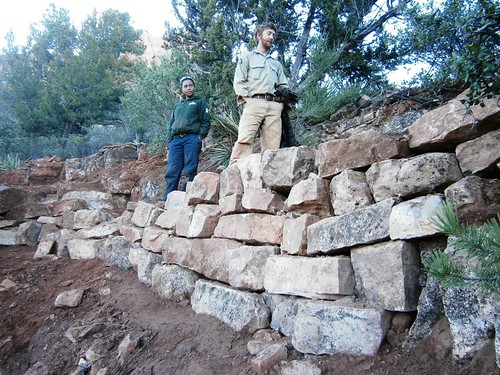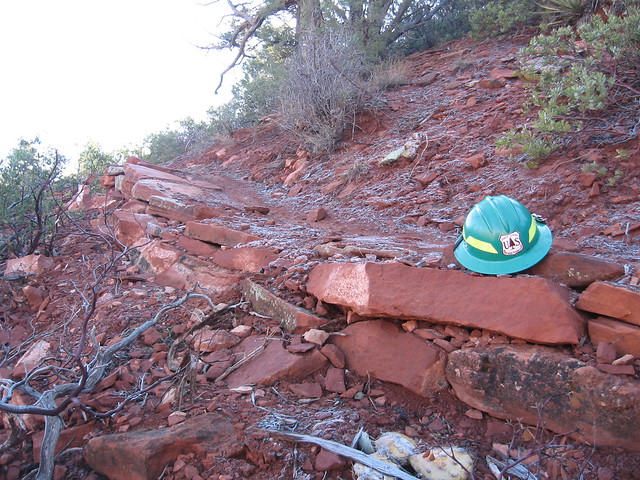Building rock retaining walls is an important skill for trail workers to develop. Some walls can last many decades with little to no maintenance when build correctly! In my opinion, they are some of the most enjoyable trail structures to build. Here are some tips to building rock retaining walls that I use:
-Take the time to establish a proper bench for the foundation rocks. It is easier to start right from the beginning than to correct a poor foundation after several tiers are laid.
-Use your biggest rock at the bottom of the wall, and if possible tie the sides of the corner rocks to bedrock, other stable big rocks, or a solid hillside.
-Make sure to set your foundation rocks so that they angle slightly into the hillside. This will help ensure that they don't slide out under pressure.
-When building a successive tier, bridge ("joint") the gaps between the rocks of the lower tier.
-Have many "tie" rocks that go from the outside edge of the wall all the way to the inside slope.
-Lower tiers should be out farther than upper tiers by at least a few inches.
-Use crush rock to fill in space between the retaining wall and the backslope.
-A layer of large rock after a layer of small rock will increase the overall stability of the wall.
-Your tool set for a rock retaining wall should include rock cradles, single jacks, double jacks, rock chisels, shovels, buckets or bags for moving rock/soil, pick mattocks, measuring tapes, rock bars, and potentially Griphoists for larger walls.
A 5 tier limestone retaining wall I built with CREC in 2013.
A simple rock retaining wall I built with CREC in 2011.
Here is useful video on rock retaining walls. It is the best one I've found that relates most to trail work:




